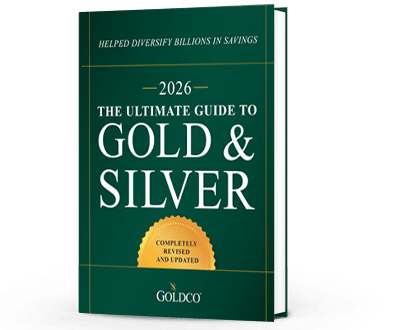6 Indicators of a Potential Recession
It seems that in the media today there are more and more mentions of the dreaded R-word: recession With growing economic uncertainty, the threat of potential recession seems to be growing as...
Economy

The term “black swan” has gained great popularity since Nassim Taleb’s 2007 book of the same name. The term refers to an event that comes as a complete surprise or shock, and one that has a significant impact, particularly when viewed with the clarity of hindsight. And today we could be witnessing numerous black swan events or potential black swan events that could impact your financial well-being.
Black swan events don’t necessarily have to be things that are unforeseen or unexpected. Examples of black swan events include the fall of the Berlin Wall and the collapse of communism, or the financial crisis of 2008. The failure of communism was foretold as early as the 1920s after the socialist calculation debate. The question wasn’t if communism would fail, but when. As it transpired, it took 69 years until the Soviet Union finally broke up.
In a similar vein, the 2008 financial crisis was forewarned by numerous economic experts and commentators. It was only the mainstream that expressed surprise, so engrossed were they by a roaring economy and housing sector.
There are numerous instances today of potential black swan events that could occur. And if they do, and you’re not prepared, your savings could take a big hit.
One potential black swan is a collapsing US housing bubble. How many times have we heard from people on Wall Street or in the housing industry that the housing bubble isn’t actually a bubble?
We’ve been told that the housing sector is in much better shape. Banks tightened lending standards after 2008, so subprime lending isn’t an issue. Bank balance sheets are in better shape thanks to Dodd-Frank regulations and stress tests, etc. But is that really true?
Most of the growth in housing prices is due to the Federal Reserve’s extraordinarily loose monetary policy post-2008. And in the last year or two that monetary policy has loosened even further, with over $4 trillion of liquidity being added to the financial system as the Fed doubled the size of its balance sheet. That isn’t sustainable.
There’s a very real possibility that we’ll see a housing downturn that will demonstrate that many of the people who bought houses weren’t really able to afford them. That’s a common problem with artificially-induced low interest rates, that they stimulate demand for capital goods in excess of what people or businesses can actually afford.
We know that lending standards have been loosened in recent years, and with interest rates being forced lower, many people have been incentivized into buying houses for fear of missing out. In other words, they’re buying now, fearing that prices will only get higher and higher. But if the bubble bursts and prices plummet, many new homebuyers may end up underwater.
Even more importantly, a housing bubble collapse could undermine confidence in the US financial system, which was supposed to have learned its lesson after 2008. Another collapse could lead millions of investors to stampede for the exits, looking to get as much cold, hard cash as possible before markets reach rock bottom.
Along with the housing bubble, debt is also in a bubble. US corporations in particular have gone on a feeding frenzy since 2008, with corporate debt up over 50% since then. Households are now more indebted than they were before 2008. And the government, as we all know, is pushing toward a $30 trillion national debt as fast as it can.
The result is a debt bubble that is the largest in history. But that debt has to be paid back at some point, and if it can’t be, the bubble could come crashing down.
That isn’t as problematic for the government, which can print money out of thin air to pay back its debt. Of course, that brings up another set of problems. But businesses that can’t pay back their debt will eventually go out of business. And the more debt businesses take on, the more dangerous their situation becomes.
If you’re invested in the stocks and bonds of these companies, that could have major impacts on your investment portfolio. With an estimated 20% of public companies being zombies today, meaning they can only pay the interest on their debt, not the principal, there could be millions of investors who could lose a lot of money if these zombie companies go under.
The amazing collapse of Afghanistan last month was eye-opening on many levels. Not only could the Afghan government not survive without US military support, but even the US military faced its own difficulties trying to find and evacuate US citizens. Now that all US troops are out of the country, we can sit back and start to analyze what happened.
The collapse of the Afghan government and the seeming ineptitude of the US government’s attempts to get its citizens out of harm’s way made the US military look incompetent and impotent. In many ways it looked like the last days of a waning empire, just like when the Soviet Union left Afghanistan with its tail between its legs.
Back then, we referred to Afghanistan as the USSR’s Vietnam. But unlike Vietnam, the war in Afghanistan actually accelerated the downfall of the Soviet Union. Now we have to ask whether Afghanistan is the United States’ Afghanistan. Will the United States’ departure be seen in hindsight as the event that tipped the country from a still stable nation into a collapsing empire?
It was only two years after the Soviets left Afghanistan that the USSR fell. While no one today expects the US to collapse within two years, it seems far more likely to many people today than it would have even 5-10 years ago.
American society seems to be coming apart at the seams, buoyed in part by the hyper-partisan politics that has dominated political discourse over the past five years. And with trillions of dollars of spending each year, a rising national debt, and a military that has now become the laughingstock of the world, the US definitely looks like a nation in decline. The retreat from Afghanistan could very well be seen in hindsight as the event that foretold the decline and downfall of the United States.
Even if the US doesn’t collapse in the next few years, or the next few decades, the US dollar could lose its status as the world’s reserve currency. In fact, currency decline often precedes a decline in military and political power.
The US dollar has been the world’s primary reserve currency since the end of World War II. But after over 75 years at the top, the dollar’s status is under threat. External threats are coming from the euro and the yuan, while internal threats are coming from the Federal Reserve, which continues to devalue the dollar year after year.
Numerous countries are grumbling about the dollar’s weakness, and many have started trying to move away from the dollar for use in international transactions. The only thing keeping the dollar afloat is the lack of a strong competitor that could replace it, but that could only be a matter of time.
If the dollar loses its place as the world’s reserve currency, it could have a significant financial impact on the United States. The federal government would no longer be assured of a market for its debt, thus immediately making deficit spending more difficult. Interest rates on US Treasury debt would likely rise, and bond prices would fall. And because demand for dollars from the rest of the world would fall, dollar-denominated assets such as US stocks could lose significant value.
While no one expects the dollar to collapse in the next few years, no one expected Afghanistan to collapse in a matter of days either. Collapses of systems can occur faster than we expect. And if the dollar’s position as the world’s reserve currency collapses, American investors and retirees could feel the pain.
Protecting yourself against these black swans means making sure that you’re prepared ahead of time. So if you haven’t already thought about how you would respond to these scenarios, now is the time to start.
Numerous investors today have made the decision to invest in precious metals to protect their retirement savings. Whether they invest 10%, 20%, or even up to 50% of their savings in precious metals, they’re convinced that precious metals such as gold and silver can help protect them against the potential fallout from black swan events.
Certainly the historical performance of gold and silver gives them some confidence in that respect. Gold and silver’s annualized gains throughout the 1970s, the decade of stagflation, averaged over 30%. And in the aftermath of the 2008 financial crisis gold nearly tripled while gold more than quintupled.
There are numerous ways to invest in gold and silver too, from direct purchases of gold and silver coins to investing in precious metals through a precious metals IRA. Whichever method you’re interested in, Goldco’s precious metals experts can answer your questions and help you through the process of selecting and buying gold and silver.
Don’t let your precious retirement savings fall to pieces if a black swan event takes place. Protect your wealth and your financial future with gold and silver.

